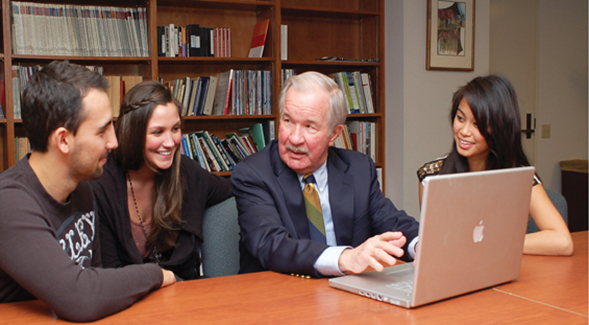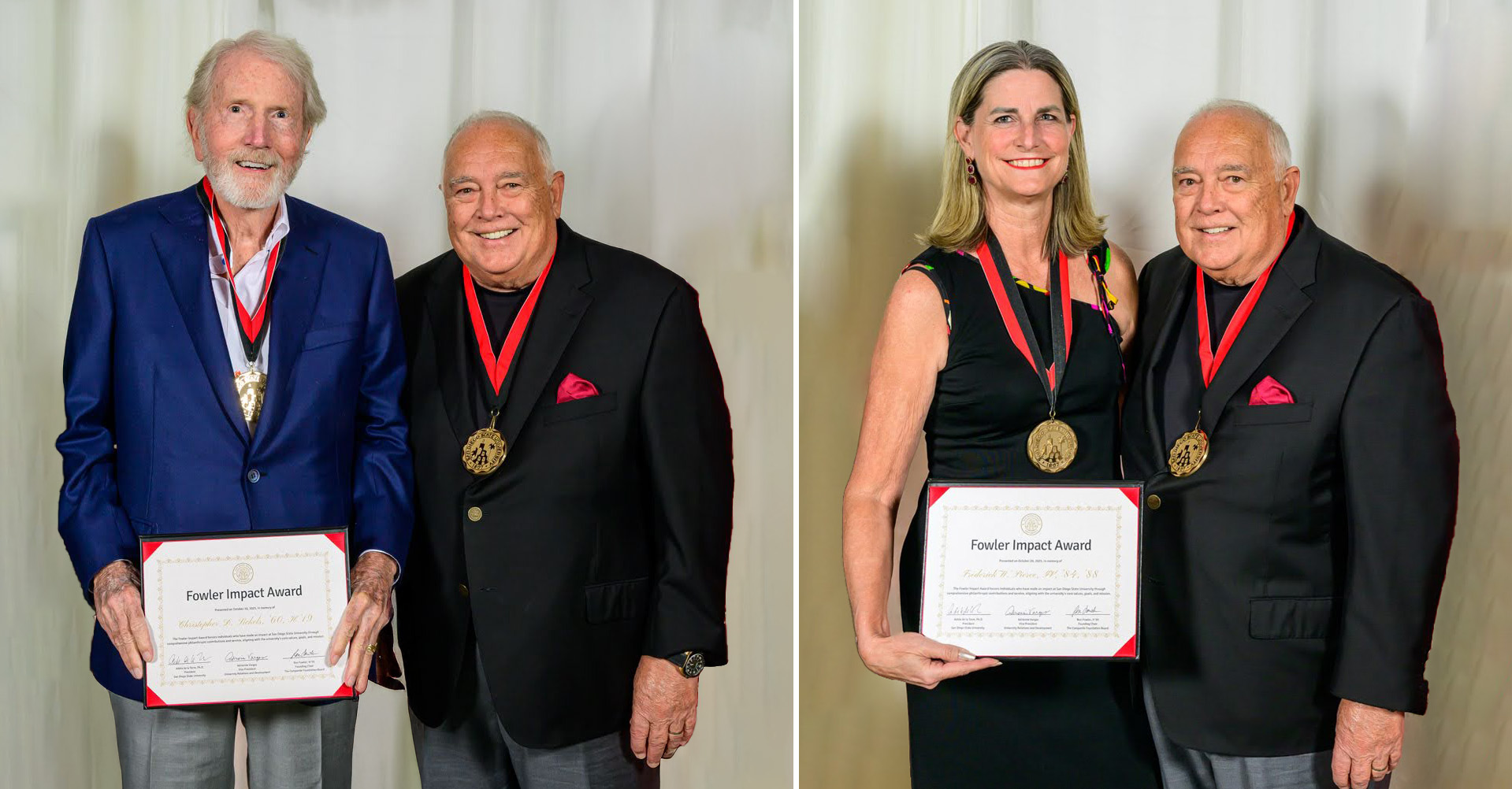In Memoriam: Glen Broom
In a career teaching and researching public relations, Broom raised the level of scholarship associated with the profession and mentored students.

“He really has shaped the definition of public relations.”
Glen Broom taught public relations to thousands of students at San Diego State University, but around the world tens of thousands more have learned their trade under his guidance and expertise.
Broom was author or co-author of the last six editions of the leading text on the profession’s theory and practice. First published in 1952, “Cutlip and Center’s Effective Public Relations” has been translated into 10 languages, including Spanish, Japanese, Bulgarian and Latvian.
In Broom’s view public relations professionals needed to be more than just spokespersons for an organization, said a former SDSU colleague, David Dozier. Besides disseminating positive institutional messages and responding to bad news, Broom believed “you need to be the eyes and ears, and bring that information back to the organization at the highest level,” Dozier said.
Broom died Aug. 8 of a heart attack while attending a family reunion in Colorado. He was 78.
Tom Gable, a San Diego public relations executive who had known Broom for more than 30 years, said talented SDSU alumni who learned their profession under Broom can be found across the nation.
Broom taught in what is now the School of Journalism and Media Studies from 1979 until his retirement in 2007, then maintained a continuing relationship as professor emeritus. The Glen M. Broom Center for Professional Development in Public Relations, housed within the school, honors his career and the endowment from Broom and his wife, Betty, a retired faculty member in the School of Nursing, that helped create it.
Broom was “a huge force in changing the profession of public relations,” said Kaye Sweetser, director of the center. “He really has shaped the definition of public relations.”
On campus, she said, “It always looked like he was having the best time of anyone around. He was always in a good mood.”
Putting research to use
Gable, vice chair of Nuffer, Smith, Tucker and former owner of his own agency, said Broom saw an importance of public relations to such matters as sales, reputation and employee retention—and that he could prove it. “He was really terrific on research,” said Gable. “He really helped me and my organization to do a better job.”
Broom was born in Illinois and earned his bachelor’s degree in a seemingly Midwestern specialty, agricultural communications. His master’s degree was in advertising; both degrees were from the University of Illinois.
After early career positions with a cooperative extension service, the U.S. Agency for International Development in Amman, Jordan, and as part owner of a Chicago-based management consulting and training firm, Broom went to the University of Wisconsin, Madison, to teach and earn his doctorate in mass communication. It was there he made the contacts that led to his international renown.
In an essay written earlier this year for a trade publication, Broom said his role in the “Effective Public Relations” textbook came in 1983 when founding authors Scott Cutlip and Allen Center—each speaking to him independently and assuming the other wouldn’t approve—asked him to take over for them for the sixth edition.
Much of Broom’s work consisted of tweaks and updates but he also contributed a new, standalone chapter on theory.
“The theory chapter became an issue when a reviewer hired by (publisher) Prentice-Hall sent a scathing review,” Broom recalled in his essay, “stating that he could tell that the new author was ‘trying to sneak a bunch of that Wisconsin theory into a perfectly good book.’” The reviewer threatened to drop the book if the theory chapter stayed in, Broom said, and a compliant young editor asked him to remove it.
“To which I replied, if that chapter goes, so do I,’” Broom said. It stayed in the book.
He later resisted similar efforts to give the book a lighter tone suitable for lower-division and community college-level courses. More recently, he had been exploring the possibility of a 12th edition.
Path to SDSU
Broom said he was lured to SDSU’s Department of Journalism in 1979 by a job offer extended “in the midst of the worst winter of our seven years in Wisconsin.” It was a time when the university’s new president, Thomas B. Day, was pushing a teacher-scholar model for SDSU in which faculty members would be expected to remain intellectually fresh in the classroom through regular research or scholarship. At the time, it was a bold approach more common to University of California campuses.
“Glen really was the personification of the teacher-scholar model,” said Dozier, who followed him into the department by about a year.
And Broom exemplified both sides of the model’s coin. Joyce Gattas, former dean of the School of Professional Studies and Fine Arts, said Broom was “totally engaged and committed to the student experience.”
Broom mentored countless students into internships and jobs, Gattas said, and was “masterful at putting students in the right place at the right time,” whether it was a corporation or independent agency. He would remain connected with them for years after, invariably remembering their names and where they got their first jobs.
When SDSU was raising funds for the new Broom Center, one of the most reliable sources of support was grateful former students of his, said Gattas, now special assistant to SDSU President Adela de la Torre. The center supports faculty research in public relations, student internships and scholarships, and trainings and seminars for working professionals.
Broom was one of eight SDSU faculty members selected by Day in 1993 to be honored for outstanding contributions to the university.
In 1987 Broom received the Pathfinder Award from the Institute for Public Relations for his contributions to public relations research. He was named Outstanding Educator by the Public Relations Society of America in 1991.
Additional awards include the Otto Bos Lifetime Achievement Award from the San Diego chapter of the Public Relations Society of America in 2008.
Broom is survived by his wife of 56 years, Betty, and four brothers, Gordon and Willard, both of Illinois, Robert, of Nebraska, and Patrick, of Arizona.
Plans for a campus celebration of Broom’s life are pending.


